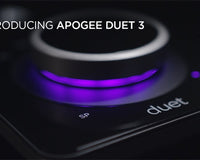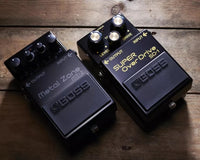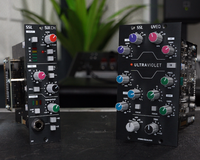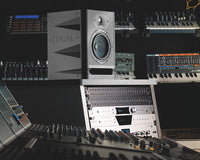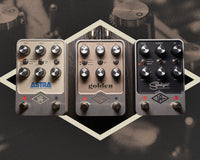So, you've got your heart set on one of Focusrite's awesome audio interfaces. But you want to know what best fits your requirements between the Scarlett vs Clarett ranges. Either way you're onto a winner but as with everything, you want to make sure that you're investing in the right gear.
Scarlett interfaces
Focusrite's Scarlett interfaces are the some of the best-selling USB audio interfaces in the world, and with good reason. Boasting exceptional specs and superb build quality, they adhere to three core tenets; the Scarlett design focuses on achieving the best sound at the fastest speed with the greatest of ease.
From the diminuitive Scarlett Solo to the studio-ready Scarlett 18i20, and not forgetting further expansion coming in the form of the OctoPre and OctoPre Dynamic, there is a Scarlett interface to meet any and every recording need you might have.
Clarett interfaces
Focusrite's Clarett interfaces followed the Scarlett range and boast very impressive appointments in their own right. Taking inspiration from Focusrite's coveted ISA mic preamp, the Clarett's Air-enabled mic preamps provide exceptional performance. Initiating Air-Mode switches in an analogue rendition of the legendary transformer-based Focusrite ISA mic pre, injecting air and clarity into performances for superior recording quality.
There are options to suit a range of connectivity needs and requirements too from the 4Pre, which offers a whopping 18-In/8-Out interface, the 8Pre with a generous 8 XLR & 1/4-inch line inputs and the OctoPre to expand your connection options even further.
However, the recently released Scarlett 3rd Generation of interfaces go some way toward bridging the divide between the ranges in terms of performance.
Where they're similar
Following the release of the 3rd Generation, both Clarett and Scarlett series interfaces feature ultra-low latency USB Type-C connectivity, Air-Mode is enabled for improved acoustic instrument and vocal recordings.
Where they differ
Putting the Scarlett and Clarett interfaces side by side, they feature similar deep red panels paired with tactile controls that respond superbly. However, when compared with Scarlett interfaces, the Clarett’s are endowed with:
- A completely different mic preamp with its own unique sonic quality
- A wider feature set in terms of inputs and outputs that includes ADAT and MIDI with increased connectivity to additional outboard and MIDI instruments
- Extra headroom for better noise handling
- Increased dynamic range across all analogue inputs/outputs. For the mic inputs this is 118dB A-weighted for Clarett USB and 111dB A-weighted for Scarlett Gen 3
- More sophisticated Air mode: The Air mode in Clarett changes the input impedance of the preamp, which applies a different colour to the mic’s characteristics, as well as the Air EQ boost
- Reduced latency so that when you incorporate amp sims and guitar effects plugins in real-time, everything runs smoothly
Conclusion
In short, you should always aim to get the best interface that your budget will allow. If it allows, then a Clarett edges things over the Scarlett. However, that doesn't mean to say that the Scarletts are old hat, they are the bestselling USB interfaces in the world for very good reason. Scarlett interfaces offer exceptional recording capabilities at affordable prices and cater to everyone from soloist to ensemble.


